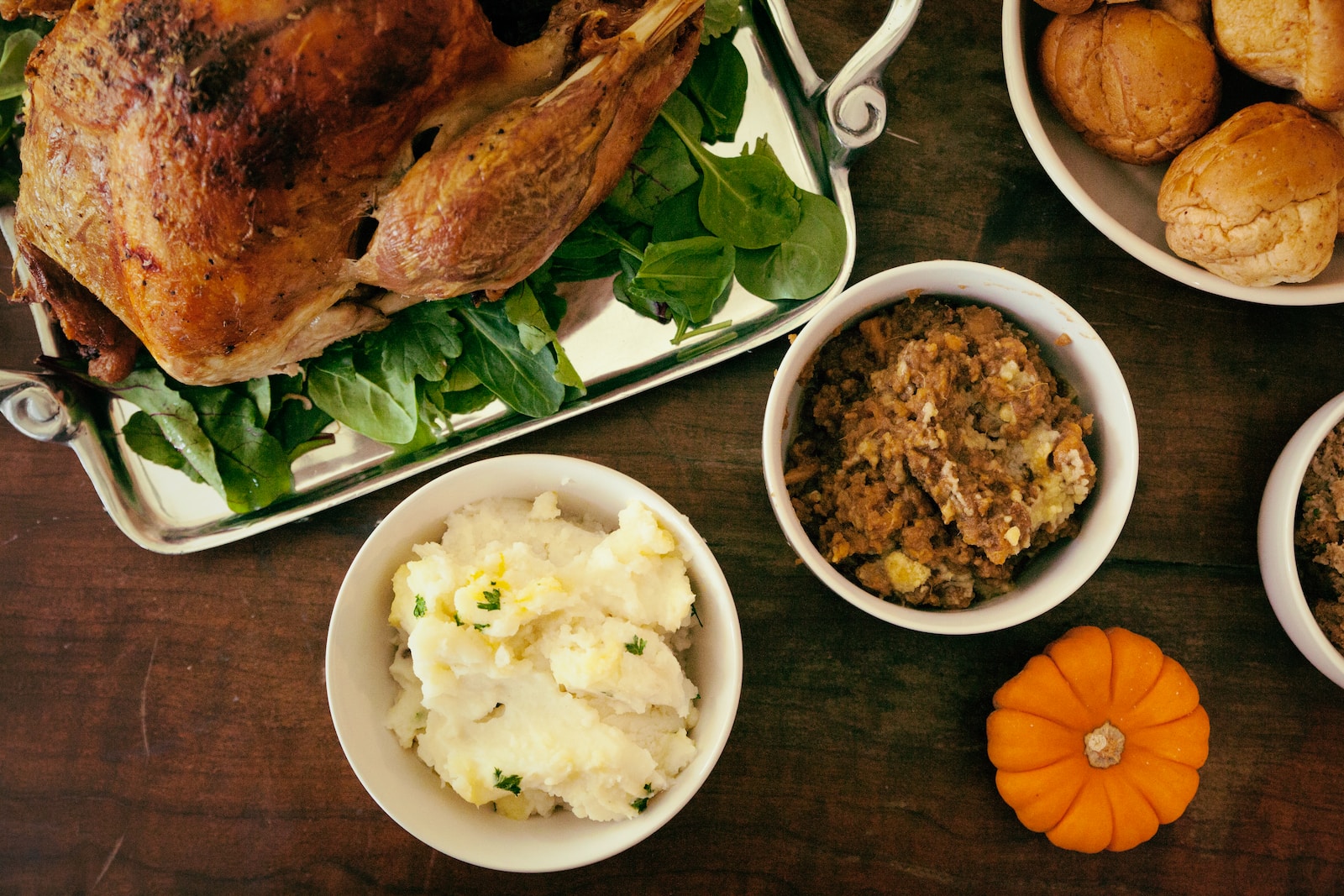Table of Contents
ToggleIntroduction: A Time for Gratitude and Reflection
Thanksgiving, a time for family gatherings, delicious feasts, and heartfelt expressions of gratitude, often coincides with increased consumption and waste generation. However, amidst the festivities, it is crucial to remember our responsibility towards the environment and strive for a more sustainable approach to this special occasion.
What day is Thanksgiving?:
Thanksgiving is celebrated on the fourth Thursday of November in the United States. In 2023, Thanksgiving will be celebrated on November 23rd.
Reducing Food Waste: A Mindful Approach
Food waste is a significant environmental concern, contributing to greenhouse gas emissions and resource depletion. During Thanksgiving, mindful planning and preparation can effectively reduce food waste.
- Plan your meals: Make a shopping list based on the number of guests and avoid impulse purchases.
- Cook smart: Adjust portion sizes to avoid leftovers and utilize leftovers creatively.
- Compost food scraps: Instead of discarding food scraps, compost them to create nutrient-rich soil amendments.
Sustainable Food Choices: Honoring the Earth’s Bounty
Thanksgiving meals often feature traditional dishes that may have a larger environmental footprint. Making sustainable food choices can significantly reduce your impact.
- Choose local and seasonal produce: Opt for locally grown, seasonal fruits and vegetables to minimize transportation emissions.
- Support sustainable farming practices: Select produce from farms that employ sustainable practices, such as organic farming and regenerative agriculture.
- Consider alternative protein sources: Plant-based protein options, such as lentils, beans, and tofu, have a lower environmental impact compared to meat.
Eco-Friendly Tableware and Decorations: Reducing Single-Use Waste
Single-use tableware and decorations can contribute to landfill waste. Opt for reusable alternatives to minimize your environmental impact.
- Use reusable plates, utensils, and napkins: Invest in durable, reusable tableware to reduce the need for disposable items.
- Embrace natural decorations: Utilize natural elements like pinecones, fall leaves, and seasonal fruits to create festive decorations.
- Avoid unnecessary packaging: When purchasing food items, choose minimal packaging or opt for bulk options to reduce waste.
Energy Efficiency: Conserving Power for a Sustainable Celebration
Energy consumption during Thanksgiving celebrations can be significant. Simple measures can help conserve energy and lower your environmental impact.
- Cook efficiently: Use energy-efficient appliances and cooking methods.
- Unplug unused electronics: Before leaving home or retiring for the night, unplug electronics to prevent energy drain.
- Embrace natural lighting: Utilize natural light whenever possible and switch to energy-efficient LED bulbs.
Thanksgiving: A Celebration of Gratitude and Sustainability
Thanksgiving provides an opportunity not only to express gratitude for our blessings but also to demonstrate our commitment to environmental stewardship. By adopting sustainable practices, we can ensure a healthier planet and a more sustainable future for generations to come.
Remember:
- Reduce food waste: Plan meals, cook smart, and compost scraps.
- Make sustainable food choices: Support local and sustainable farming practices.
- Use eco-friendly tableware and decorations: Opt for reusables and natural materials.
- Practice energy efficiency: Conserve power with simple measures.
Thanksgiving movies:
There are many Thanksgiving movies that have been made over the years. Some of the most popular Thanksgiving movies include:
- A Charlie Brown Thanksgiving (1965)
- Planes, Trains, and Automobiles (1987)
- Home Alone (1990)
- Miracle on 34th Street (1994)
- The Blind Side (2009)
Cornucopia:
A cornucopia is a horn-shaped basket that is overflowing with fruits and vegetables. It is often used as a symbol of Thanksgiving and abundance.
Pilgrim:
A Pilgrim was a member of a group of English Puritans who sailed to America in the early 1600s. The Pilgrims are best known for their role in the first Thanksgiving, which they celebrated in 1621 with the Wampanoag people.
Thanksgiving trivia:
Here are some fun facts about Thanksgiving:
- The first Thanksgiving was celebrated in 1621 by the Pilgrims and the Wampanoag people.
- The turkey was not the traditional main course for the first Thanksgiving. Instead, the Pilgrims ate venison, goose, and fish.
- The Macy’s Thanksgiving Day Parade has been held in New York City since 1924.
- The average American eats about 16 pounds of turkey on Thanksgiving.
- The most popular Thanksgiving side dish is mashed potatoes.
Wampanoag:
The Wampanoag people were a Native American tribe who lived in what is now Massachusetts. They played a key role in the first Thanksgiving, providing the Pilgrims with food and assistance.
What is Thanksgiving?:
Thanksgiving is a holiday celebrated in the United States on the fourth Thursday of November. It is a time to give thanks for the blessings of the past year. Thanksgiving is also a time for family gatherings, delicious feasts, and festive activities.
History of Thanksgiving:
The history of Thanksgiving dates back to the early 1600s, when the Pilgrims and the Wampanoag people celebrated the first Thanksgiving in 1621. The Pilgrims had arrived in America the previous year, and they were grateful for the help and support of the Wampanoag people. The two groups shared a feast of venison, goose, fish, corn, and vegetables.
Why do we celebrate Thanksgiving?:
We celebrate Thanksgiving to give thanks for the blessings of the past year. It is a time to reflect on all that we are grateful for, including our families, our friends, our health, and our freedom. Thanksgiving is also a time to give back to our communities and help those in need.
When was the first Thanksgiving?:
The first Thanksgiving was celebrated in 1621 by the Pilgrims and the Wampanoag people.
The first Thanksgiving:
The first Thanksgiving was a three-day feast that took place in Plymouth, Massachusetts. The Pilgrims and the Wampanoag people shared a meal of venison, goose, fish, corn, and vegetables. They also played games and danced.







